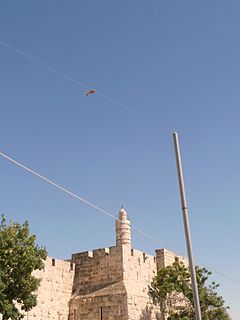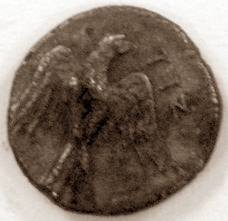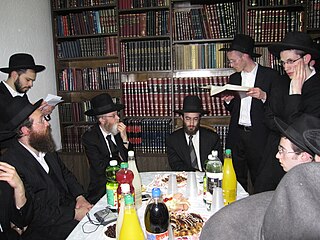 W
WThe Jerusalem Talmud, also known as the Palestinian Talmud or Talmuda de-Eretz Yisrael, is a collection of Rabbinic notes on the second-century Jewish oral tradition known as the Mishnah. Naming this version of the Talmud after the Land of Israel rather than Jerusalem is considered more accurate by some, as while the work was certainly composed in "the West", i.e. in the Holy Land, it mainly originates from the Galilee rather than from Jerusalem in Judea, as no Jews lived in Jerusalem at this time. The Jerusalem Talmud was compiled in the Land of Israel, then divided between the Byzantine provinces of Palaestina Prima and Palaestina Secunda, and was brought to an end sometime around 400. The Jerusalem Talmud predates its counterpart, the Babylonian Talmud, by about 200 years, and is written in both Hebrew and Jewish Palestinian Aramaic.
 W
WThe Talmud is the central text of Rabbinic Judaism and the primary source of Jewish religious law (halakha) and Jewish theology. Until the advent of modernity, in nearly all Jewish communities, the Talmud was the centerpiece of Jewish cultural life and was foundational to "all Jewish thought and aspirations", serving also as "the guide for the daily life" of Jews.
 W
WThe Gemara is the component of the Talmud comprising rabbinical analysis of and commentary on the Mishnah. After the Mishnah was published by Judah the Prince, the work was studied exhaustively by generation after generation of rabbis in Babylonia and the Land of Israel. Their discussions were written down in a series of books that became the Gemara, which when combined with the Mishnah constituted the Talmud.
 W
WBaraita designates a tradition in the Jewish oral law not incorporated in the Mishnah. Baraita thus refers to teachings "outside" of the six orders of the Mishnah. Originally, "Baraita" probably referred to teachings from schools outside the main Mishnaic-era academies – although in later collections, individual Baraitot are often authored by sages of the Mishna (Tannaim).
 W
WBerakhot is the first tractate of Seder Zeraim of the Mishnah and of the Talmud. The tractate discusses the rules of prayers, particularly the Shema and the Amidah, and blessings for various circumstances.
 W
WThe Soloveitchik dynasty of rabbinic scholars and their students originated the Brisker method of Talmudic study, which is embraced by their followers in the Brisk yeshivas. It is so called because of the Soloveitchiks' origin in the town of Brisk, or Brest-Litovsk, located in what is now Belarus. Many of the first Soloveitchik rabbis were the official rabbis of Brisk, and each in turn was known as "the Brisker Rov". Today, Brisk refers to several yeshivas in Israel and the United States founded by members of the Soloveitchik family.
 W
WEin Ayah is a commentary on Ein Yaakov - a compilation of all the Aggadic material in the Talmud - by Rabbi Abraham Isaac Kook, the first Ashkenazi chief rabbi of British Mandatory Palestine and founder of Yeshiva Mercaz HaRav Kook.
 W
WEin Yaakov is a 16th Century compilation of all the Aggadic material in the Talmud together with commentaries. Its introduction contains an account of the history of Talmudic censorship and the term Gemara. It was compiled by Jacob ibn Habib and by his son Rabbi Levi ibn Habib.
 W
WEruvin is the second tractate in the Order of Moed, dealing with the various types of eruv. In this sense this tractate is a natural extension of Shabbat; at one point these tractates were likely joined but then split due to length.
 W
WA gerah is an ancient Hebrew unit of weight and currency, which, according to the Bible, Exodus, 30:13, was equivalent to 1/20 of a shekel. God tells Moses, the payment for life ransom during the census taking is 1/2 a shekel, "which weighs ten gerahs". This would make a whole shekel equal to 20 gerahs.
 W
WHadran is a short prayer recited upon the completion of study of a tractate of the Talmud or a Seder of Mishnah. It is also the name of the scholarly discourse delivered at a siyum masechet, the ceremony celebrating the completion of study of a Talmudic tractate.
 W
WKetubot is a tractate of the Mishnah and the Talmud in the order of Nashim. It deals with a variety of marital responsibilities, especially those intended for the marital contract, also named the ketubah. Due to the wide breadth of subjects discussed in this tractate, Ketubot is often referred to as the Shas katan .
 W
WKil'ayim is the fourth tractate of Seder Zeraim of the Mishnah, dealing with several biblical prohibitions of mixed species, namely, planting certain mixtures of seeds, grafting different species of trees together, growing plants other than grapevines in vineyards, crossbreeding animals, working a team of different kinds of animals together, and mixing wool and linen in garments.
 W
WMegillah is the tenth Tractate of Mishnah in the Order Moed. It and its Gemara deal with the laws of Purim and offers exegetical understandings to the Book of Esther. It also includes laws concerning the public reading of the Torah and other communal synagogue practices. There is also a segment in the first chapter which details certain miscellaneous laws. A megillah is a finely detailed account or book but the term by itself commonly refers to the Book of Esther.
 W
WTractate Middot is the tenth tractate of Seder Kodashim of the Mishnah and of the Talmud. This tractate describes the dimensions and the arrangement of the Temple Mount in Jerusalem, and the Second Temple buildings and courtyards, various gates, the altar of sacrifice and its surroundings, and the places where the Priests and Levites kept watch in the Temple.
 W
WThe Mikraot Gedolot "Great Scriptures," often called the "Rabbinic Bible" in English, is an edition of the Tanakh that generally includes four distinct elements:The Biblical text according to the masorah in its letters, vocalization, and cantillation marks Masoretic notes on the Biblical text Aramaic Targum Biblical commentaries
 W
WThe minor tractates are essays from the Talmudic period or later dealing with topics about which no formal tractate exists in the Mishnah. They may thus be contrasted to the Tosefta, whose tractates parallel those of the Mishnah.
 W
WNedarim is a masechet of the order of Nashim of the Mishnah and the Talmud. Its subject is laws relating to the neder, a kind of vow or oath in Judaism.
 W
WNehardea Academy was one of the major rabbinical academies in Babylon, active intermittently from the early Amoraim period and until the end of the Geonim period. It was established by the Amora Samuel of Nehardea, one of the great sages of Babylon.
 W
WLouis Israel Newman was a prominent United States Reform rabbi and author.
 W
WPumbedita Academy or Pumbedita Yeshiva was a yeshiva in Babylon during the era of the Amoraim and Geonim sages. It was founded by Judah bar Ezekiel and, with the Sura Academy founded in 225 by Abba Arika, was an influential and dominant yeshiva for about 800 years.
 W
WRosh Hashanah is the name of a text of Jewish law originating in the Mishnah which formed the basis of tractates in both the Babylonian Talmud and the Jerusalem Talmud of the same name. It is the eighth tractate of the order Moed. The text contains the most important rules concerning the calendar year, together with a description of the inauguration of the months, laws on the form and use of the shofar and laws related to the religious services during the Jewish holiday of Rosh Hashanah.
 W
WShabbat, lit. "Sabbath") is the first tractate of Seder Moed of the Mishnah and of the Talmud. The tractate deals with the laws and practices regarding observing the Jewish Sabbath. The tractate focuses primarily on the categories and types of activities prohibited on the Sabbath according to interpretations of many verses in the Torah, notably Exodus 20:9–10 and Deut. 5:13–14.
 W
WShevi'it is the fifth tractate of Seder Zeraim of the Mishnah, dealing with the laws of leaving the fields of the Land of Israel to lie fallow every seventh year; the laws concerning which produce may, or may not be eaten during the Sabbatical year; and the cancellation of debts and the rabbinical ordinance established to allow a creditor to reclaim a debt after the Sabbatical year.
 W
WA siyum ("completion") is the completion of any unit of Torah study, or book of the Mishnah or Talmud in Judaism. A siyum is usually followed by a celebratory meal, or seudat mitzvah, a meal in honor of a mitzvah, or commandment. Siyum also refers to the celebration.
 W
WSiyum HaShas is a celebration of the completion of the Daf Yomi program, a roughly seven-and-a-half-year cycle of learning the Oral Torah and its commentaries, in which each of the 2,711 pages of the Babylonian Talmud are covered in sequence - one page per day. The first Daf Yomi cycle began on the first day of Rosh Hashanah 5684 ; the thirteenth cycle concluded on January 4, 2020 and the fourteenth cycle began the following day, to be concluded on June 7, 2027. The Siyum HaShas marks both the end of the previous cycle and the beginning of the next, and is characterized by inspiring speeches and rousing singing and dancing. The next day they arise in the morning and restart the entire process, each day, one daf (page).
 W
WSura Academy was a Jewish yeshiva located in Sura, Babylonia. With Pumbedita Academy, it was one of the two major Jewish academies from the year 225 CE at the beginning of the era of the Amora sages until 1033 CE at the end of the era of the Gaonim. Sura Yeshiva Academy was founded by the Amora Abba Arika ("Rav"), a disciple of Judah ha-Nasi. Among the well-known sages that headed the yeshiva were Rav Huna, Rav Chisda, Rav Ashi, Yehudai Gaon, Natronai Gaon, Saadia Gaon, and others.
 W
WTa'anit or Taanis is a volume of the Mishnah, Tosefta, and both Talmuds. In Judaism these are the basic works of rabbinic literature. The tractate of Ta'anit is devoted chiefly to the fast-days, their practices and prayers. In most editions of the Talmud this treatise is the ninth in the mishnaic order of Seder Mo'ed, and is divided into four chapters containing thirty-four folio in all. The following is a summary of its contents:
 W
WTractate Temurah is a tractate of the Mishnah, Tosefta, and Babylonian Talmud, which is part of the Order of Kodashim. Its main subject is the Biblical prohibition against attempting to switch the sanctity of an animal that has been sanctified for the Temple in Jerusalem with another non-sanctified animal. If this is attempted, both animals become sanctified, and the person who attempted the transfer is punished with lashes.
 W
WThe Tosafot, Tosafos or Tosfot are medieval commentaries on the Talmud. They take the form of critical and explanatory glosses, printed, in almost all Talmud editions, on the outer margin and opposite Rashi's notes.
 W
WThe Tosefta is a compilation of the Jewish oral law from the late 2nd century, the period of the Mishnah.